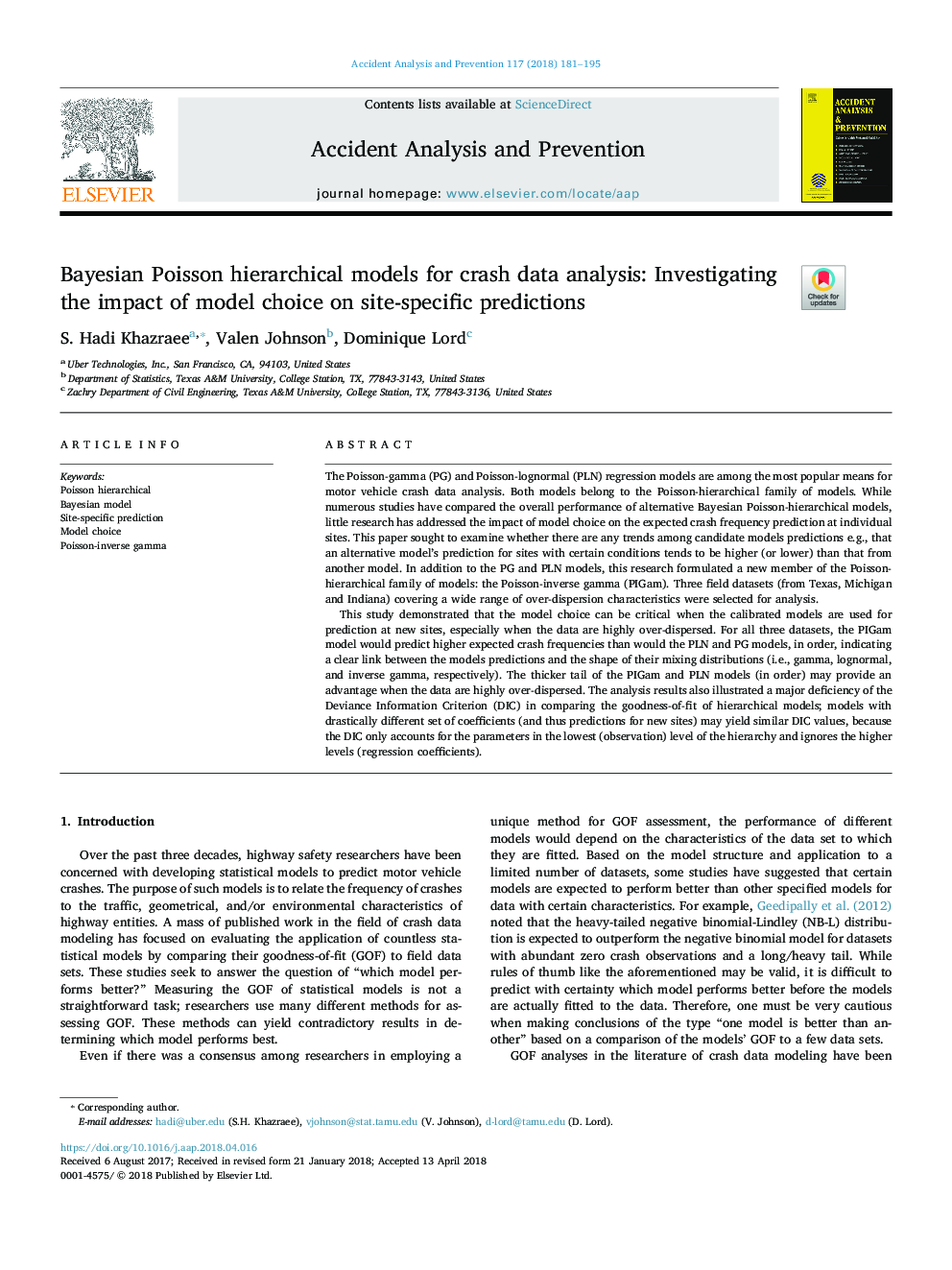| Article ID | Journal | Published Year | Pages | File Type |
|---|---|---|---|---|
| 6965111 | Accident Analysis & Prevention | 2018 | 15 Pages |
Abstract
This study demonstrated that the model choice can be critical when the calibrated models are used for prediction at new sites, especially when the data are highly over-dispersed. For all three datasets, the PIGam model would predict higher expected crash frequencies than would the PLN and PG models, in order, indicating a clear link between the models predictions and the shape of their mixing distributions (i.e., gamma, lognormal, and inverse gamma, respectively). The thicker tail of the PIGam and PLN models (in order) may provide an advantage when the data are highly over-dispersed. The analysis results also illustrated a major deficiency of the Deviance Information Criterion (DIC) in comparing the goodness-of-fit of hierarchical models; models with drastically different set of coefficients (and thus predictions for new sites) may yield similar DIC values, because the DIC only accounts for the parameters in the lowest (observation) level of the hierarchy and ignores the higher levels (regression coefficients).
Keywords
Related Topics
Physical Sciences and Engineering
Chemical Engineering
Chemical Health and Safety
Authors
S. Hadi Khazraee, Valen Johnson, Dominique Lord,
